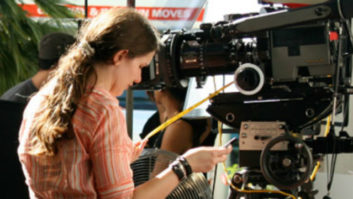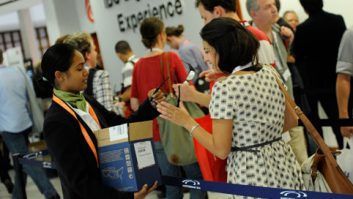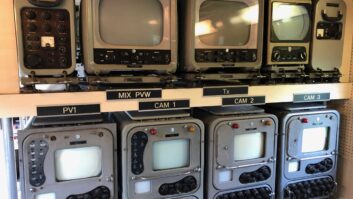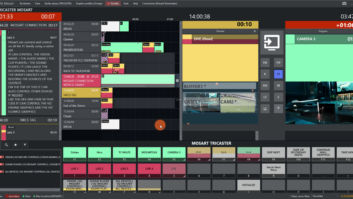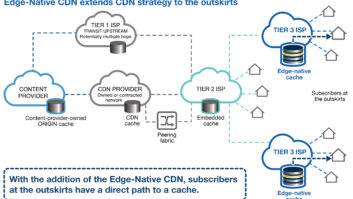Like any broadcaster, production company, studio, post house, audio producer, or other media and entertainment organisation today, you’ve likely got countless assets in your archive going back decades or more. It’s also likely that you have already digitised much of your audio and video and added it to your content management system, where it is safe from the ravages of time and is accessible for repurposing and monetisation.
But what about your legacy assets? If you’re like most M&E organisations, then there’s a good chance you have a warehouse (or more) full of physical artefacts that date back to the start of your company’s history and haven’t been seen in years. Even younger or smaller organisations often have tens of thousands or even hundreds of thousands of these historical assets. Deteriorating film. Loose papers. Promotional materials. Newspaper clippings. Costumes. Set pieces. 3D models. Scripts with hand-written notes made by directors or on-air talent. Production equipment. Memorabilia. You probably don’t even realise all the gems you have.
These materials are yours alone. They’re part of your organisation’s DNA. And there is a strong business case for digitising all of them.
By digitising your heritage, you can:
Generate revenue
Just like with your digitised audio and video, there’s plenty of potential to capitalise on your heritage as well. Heritage assets are ideally suited to a digital and social media age. Once digitised and enhanced with metadata, your historical assets can be made available through your content management system.
Adding potentially thousands of new, rarely seen assets to your searchable archive gives your company a new reason to promote it and creators a new reason to search it. Anyone with access — internal or external — can explore your heritage items to find that special something for their projects. Your history could feature in national advertising campaigns or be the inspiration for the next big movie remake or sequel. Marketing can use the digital assets to better tell your organisation’s story and increase ROI for the marketing budget. You could capitalise on the public’s appetite for nostalgia and authentic content. The licensing and monetisation potential is almost endless.
Mitigate liability and protect copyright and intellectual property
The yearning for authentic content is sizeable and can be readily monetised, so organisations should ensure that they control their own content to preserve IP and rights over their heritage assets. However, many studios either didn’t collect or subsequently donated or disposed of production assets. Only much later did they realise that people were collecting those items and that they had lost control over their “property.” Today’s M&E companies can learn from their predecessors’ mistakes.
Property such as illustrations, notes, and blueprints, all captured on paper, become fragile over time. Digitisation protects this and other types of content, ensuring it lasts through time and the elements. Equally important, digitisation makes your assets easier to protect as IP and readily accessible in the event of any future litigation. Easier access would mean it can be more quickly & safely used in defence of IP.
Reduce costs
If you do digitisation right, then you’ll convert your entire collection at once at the highest possible resolution and consistency you can get, and you’ll make sure those digital assets meet all the necessary standards for repurposing. That way, in the long run, you’ll save your organisation the cost of handling the originals multiple times and having to upgrade or convert the digital assets to different formats to accommodate changing standards. Digitising your heritage and moving it to a searchable database with AI-enriched metadata also makes research more efficient and makes it easier to reuse those assets in multiple ways.
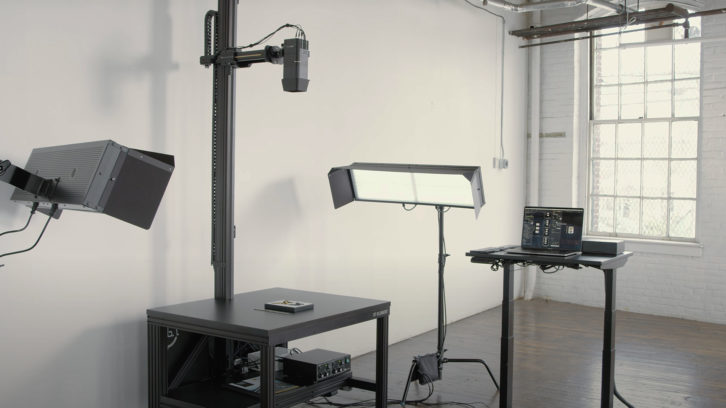
When you digitise once, doing it right, and maintain multiple copies, you essentially lock down your material so that it is both digitally preserved and secure. To achieve strategic redundancy and enhance security, you simply retain more than one copy in more than one location. This approach allows you to eliminate replacement costs and, when dealing with physical objects such as furniture or set components, helps you to bring down storage costs as well.
Simplify production of sequels and series
When studios undertake production of a sequel or series, they meticulously study and research old movies and productions to be sure that every detail is just right. They need to re-create the costumes, the makeup and hair, and in many cases the entire set. Proper digitisation of images and objects is key to preserving not just resolution, but also the colour and tonal accuracy essential to nailing the right look for elements as small as a hair pin or as large as a truck or building. With fast access to this information, studios can significantly reduce their investment of time and money while enhancing the quality of the finished product.
Capture the brand value inherent in your heritage
Your heritage is too valuable and too intertwined with brand value to ignore — especially in an era when the vast majority of an organisation’s market value is based on intangibles like goodwill rather than what’s on the accounting books. As stewards of a company’s worth, leaders have a fiduciary responsibility to put this heritage to work in meaningful ways to attract and retain diverse stakeholder audiences and convert them into sustainable P&L impact and enhanced market value over time. The beauty is that these assets already exist, and you own them — or you certainly own the narratives that give them meaning and impact. They only need to be brought back to life through the power of digitisation!
How can you make all of this happen with minimal cost and effort? By choosing equipment that is purpose-built for heritage digitisation and designed with ergonomics, ease of use, efficiency, and modularity in mind. And/or you can outsource the process to digitisation experts who do this for a living every day — ones who are well-versed in collections management, professional photography, and systems integration and who will support you from planning through completion.
When you go to the effort to digitise your heritage, the return on investment is immeasurable. And there is no time like the present to get started. Today’s technology can capture more information than exists on the original, especially when you’re dealing with film. Thanks to workflow efficiencies and improvements to hardware and software, digitisation can be fast and relatively inexpensive. Begin now and begin reaping the rewards of digitisation.
